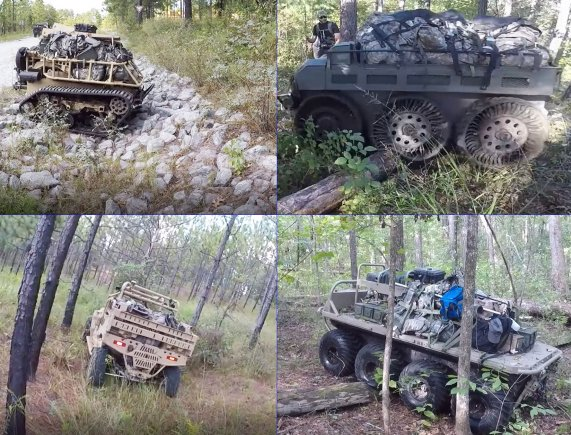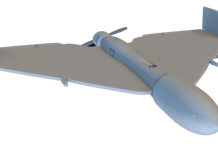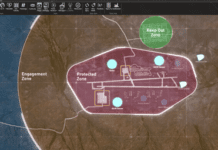This post is also available in:
 עברית (Hebrew)
עברית (Hebrew)
One of the bigger physical hardships an infantry soldier deals with is the burden of carrying his heavy gear dozens of miles. Soldiers today are overburdened, with new technological innovations in weapons and gear that soldiers need to bring with them, some soldiers can find themselves carrying over 60% of their body weight during training exercises and war. The extra weight slows squad movement and tires out soldiers before even making it to the battle, because of this the U.S. Army has created the Squad Multipurpose Equipment Transport (SMET) program.
The idea of the SMET program is to produce a robot that is capable of carrying 1,000 pounds of equipment for a nine man squad. The robot needs to be able to travel up to 60 miles, over 72 hours and be able to provide up to a kilowatt of electrical power for squad devices. The robot is supposed to be controlled by one of the squadmates via a handheld controller.
As part of the SMET program, Textron Systems is developing a robot companion capable of carrying ammunition, weapons, mines, medical equipment, food, water, and practically anything else a soldier will need to bring along with him to battle. The robot, named Grizzly, helps make ground forces more armed and at the same time more agile.
Originally developed by Howe & Howe, which were later acquired by Textron in 2018, Grizzly seems to be based off of Howe & Howe’s RS2-H1 drone. Popularmechanics.com reports that the RS2-H1 has a range of 80 miles and is powered by a hybrid electric-diesel engine. The RS2-H1 has already accomplished a 60 mile march through difficult terrain, carrying more than 1,000 pounds. The march took slightly over 29 hours to complete with an average speed of two miles an hour, more or less the speed of an infantry squad marching cautiously.
The Army hopes that soon enough SMET robots will be able to assist squads in accomplishing further tasks, such as ferrying wounded back to posts, conducting reconnaissance missions, and acting as communications relays.


























